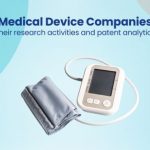
Seeking Ways to Address Challenges of Invasive Methods in Iron Deficiency Anemia Diagnosis
Faced with the challenge of improving non-invasive measurement for Iron Deficiency Anemia (IDA), a leading healthcare company sought new partnership opportunities to enhance its medical device product strategies. The company aimed to conduct an in-depth analysis of the latest technologies, focusing on solutions that had reached at least the proof-of-concept stage.
Traditional methods for assessing anemia, such as finger-prick devices, involved invasive procedures that were often uncomfortable, particularly for children, leading to lower diagnosis rates. To address this issue, the company advocated for the adoption of non-invasive devices that could provide accurate measurements without the discomfort of traditional methods. By exploring potential partnerships with solution providers in this emerging space, the company aimed to increase diagnosis rates and position itself as a leader in innovative healthcare solutions for the future.
Delivering Key Suppliers of Non-Invasive IDA Diagnostic Solutions
The analysis provided the company with a curated list of key suppliers in the Iron Deficiency Anemia (IDA) measurement segment, detailing commercialized product offerings and research initiatives from leading universities. This extensive research included thoroughly examining the technologies and devices available, enabling them to select the most suitable options tailored to their needs.
Key findings from our study gave them a list of relevant suppliers with whom they can partner to explore advanced non-invasive IDA solutions, filtered according to their preference (e.g., preferred geography).
Key Findings from the Analysis
The analysis helped identify potential partnership opportunities to achieve the company’s product expansion goals in the non-invasive IDA segment. Some of the key findings were:
Attikouris Medical (Greece)
Attikouris Medical has developed Haemospect, a non-invasive device for measuring hemoglobin. The device works by placing a sensor head on the skin, projecting white light into the tissue via a waveguide. Some of the light is absorbed by tissue components, while the reflected light is transmitted back through another waveguide. A spectrometer breaks the reflected light into its wavelengths, and an electronic evaluation unit analyzes it to calculate hemoglobin levels.
Mediworks (China)
Mediworks has introduced the FC162 Automatic Fundus Camera, which captures binocular fundus images (examining the back of the eye, including the retina) in a fully automatic way with features such as auto alignment, auto focus, and auto voice interaction. This device generates AI-supported diagnosis reports, helping analyze conditions like retinal diseases, diabetes, cardiovascular issues, neurological diseases, and even anemia.
Research Process- How did GreyB Help?
Investigating Non-Invasive Solutions for Iron Deficiency Anemia (IDA)
The process began by thoroughly exploring non-invasive IDA measurement technologies, including patents, research papers, product brochures, and industry events. This initial research provided a comprehensive overview of potential solutions aligned with the company’s goal of increasing iron-deficiency diagnosis through cost-effective, non-invasive methods.
Market Landscape Analysis
A detailed analysis was conducted across various sources, including trade shows, videos, industry blogs, government projects, and more. This analysis focused on gathering key technical information, such as accuracy levels, age groups targeted, technology readiness, and provider types (e.g., MNCs, SMEs, startups, or universities). Solutions were evaluated based on their positioning—whether they served as screening or awareness tools.
Technology and Solution Evaluation
Ten promising solutions were shortlisted for deeper investigation. Each was evaluated based on the underlying technology, cost, distribution channels, existing partnerships, regulatory approvals, product testing, and any limitations. This detailed assessment helped the company identify the most viable non-invasive IDA measurement technologies for future adoption and partnership opportunities.
Achieving success in expanding non-invasive solutions requires careful consideration of available technologies and strategic partnerships. Companies often face challenges such as:
- Identifying the most suitable non-invasive solutions for their product portfolio.
- Ensuring accuracy and effectiveness across diverse patient demographics.
- Securing partnerships that align with long-term innovation and market expansion goals.
If you want to overcome these challenges and explore innovative, non-invasive solutions, connect with our specialists today to discover tailored strategies for your business growth.









